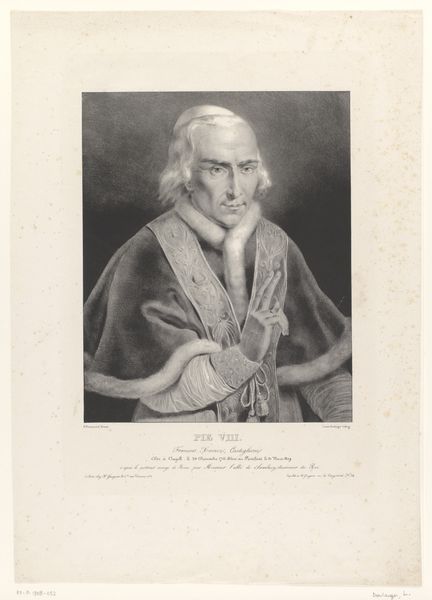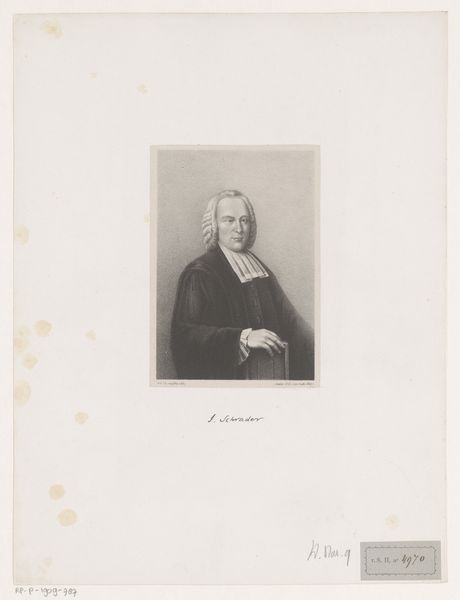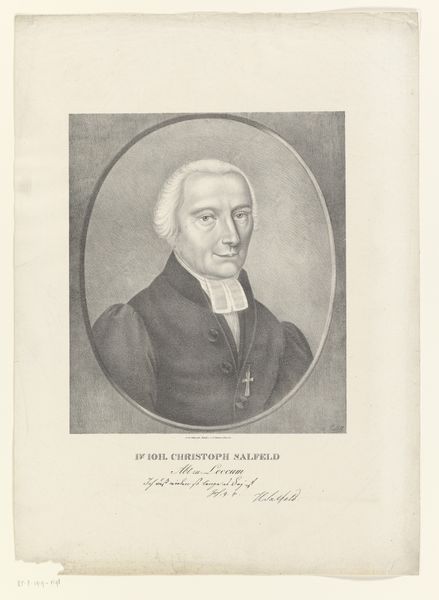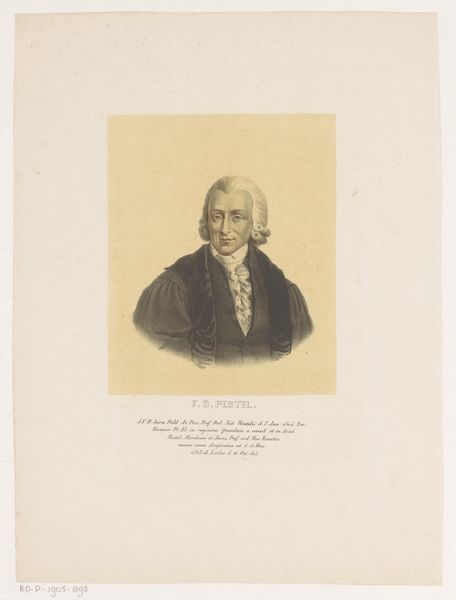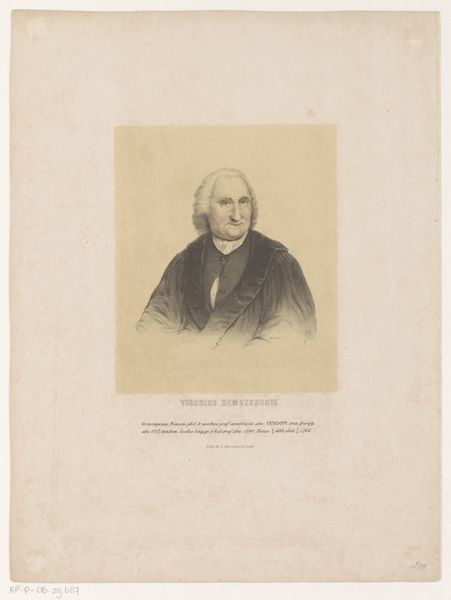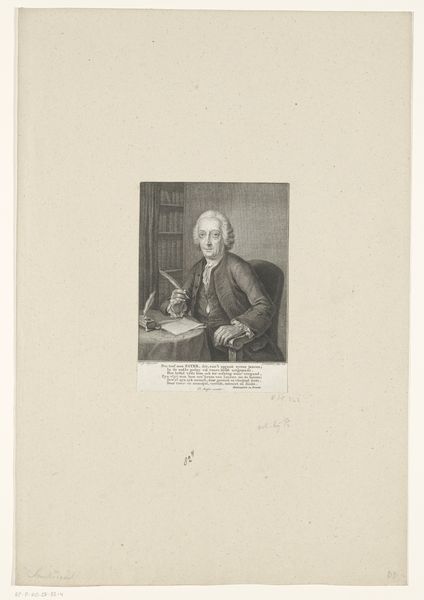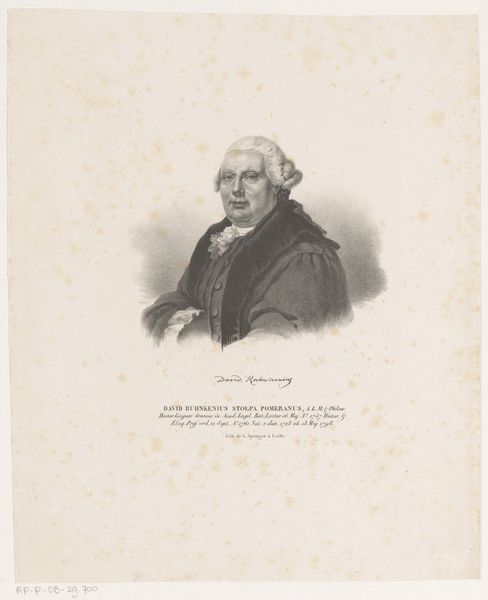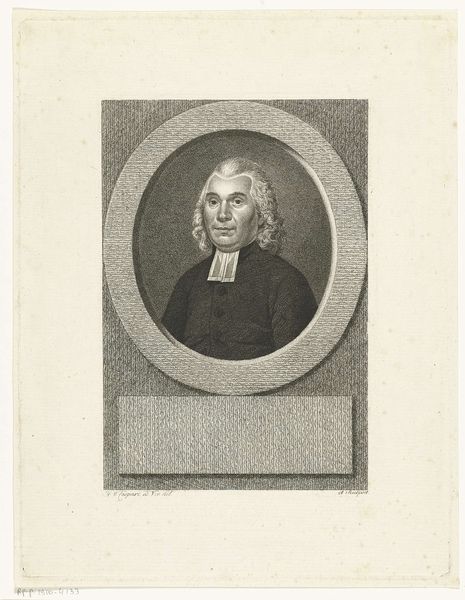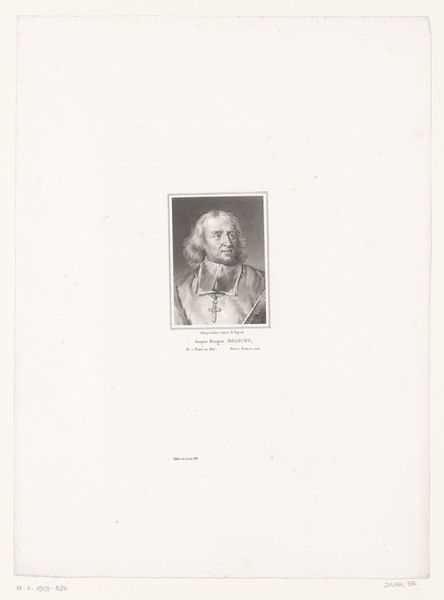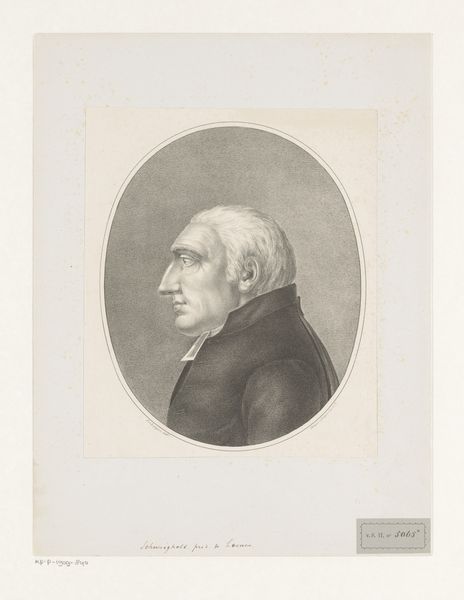
print, engraving
#
portrait
#
pencil drawn
# print
#
figuration
#
tonal art
#
academic-art
#
engraving
#
realism
Dimensions: height 234 mm, width 161 mm
Copyright: Rijks Museum: Open Domain
This is a portrait of William Romaine, made by Nicolaas Johannes Wilhelmus de Roode, dating from the 19th Century. It’s an engraving, meaning that the artist used a tool to cut lines into a metal plate, which was then inked and printed onto paper. Look closely and you can see how de Roode built up the image of Romaine through a dense network of tiny, precise strokes. Notice how the lines vary in thickness and direction, creating areas of light and shadow that give the portrait a sense of depth and volume. Engraving was a highly skilled and labor-intensive process, requiring years of training and practice. In its time, the production of prints like this was essential to circulating images and ideas, allowing for the mass reproduction of artworks and portraits. Paying attention to the materials and processes of this print, we can appreciate the incredible skill and artistry of de Roode, and the value that was once placed on craft and manual labor.
Comments
No comments
Be the first to comment and join the conversation on the ultimate creative platform.
